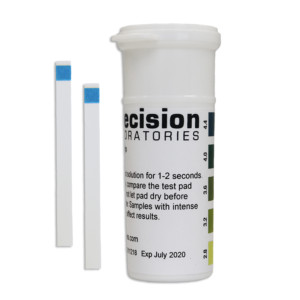Beginners in the wine-making field have a lot to learn when it comes to creating the perfect batch of wine. Your path will start with trial and error, learning the brewing process, ingredients and flavors, bottling, spoilage, etc. There are many different aspects to making wine, but one that we can help with is measuring the pH.
We’ve written a few articles on this topic before, covering various aspects like pH versus total acidity in wine, acidity in wine, and how different flavors can affect acidity. However, we haven’t spent a lot of time on the subject of when you should test the pH of your wine.
pH is a fundamental part of the wine-making process and the end product. The right pH level will result in a balanced taste and a stable wine. If the pH is too low (acidic), the wine is more likely to spoil or oxidize.
If you are not using a box wine kit or a tried and true recipe, or if you are using fresh fruit or fruit that tastes especially sharp or sour, you need to check the pH. Any time you make wine from fresh wine grapes or you’re using a wine must made of 100% fruit juice, such as apple wine, you should check the pH.
So, when exactly should you test the pH?
 First, you should check the pH before you start fermentation. In other words, before you add the yeast, you need to test the must to determine if any changes are needed. If fermentation has already begun, the CO2 gas will result in a false reading. Pour a sample of the solution into a cup, dip our pH 2.8-4.4 test strip into the sample for one second, and compare the results after 10-15 seconds. Remember, these strips don’t work well with red wines, as the red will stain the strip, making it difficult to read the color results.
First, you should check the pH before you start fermentation. In other words, before you add the yeast, you need to test the must to determine if any changes are needed. If fermentation has already begun, the CO2 gas will result in a false reading. Pour a sample of the solution into a cup, dip our pH 2.8-4.4 test strip into the sample for one second, and compare the results after 10-15 seconds. Remember, these strips don’t work well with red wines, as the red will stain the strip, making it difficult to read the color results.
You should also check the pH before you bottle the wine, but make sure the wine has been degassed first. Again, any CO2 gas leftover from fermentation will result in a false reading.
Generally, you want a pH reading between 3.4 and 3.8. This is going to give you a balanced flavor that is not too alkaline or too acidic and susceptible to spoilage and oxidation. If you find you need to make adjustments to get your pH in the right range, there are a few different options you can purchase through your brew supply store.
Remember, total acidity and pH are two different factors in wine. You will need to perform separate tests to determine the total acidity.







Leave A Comment